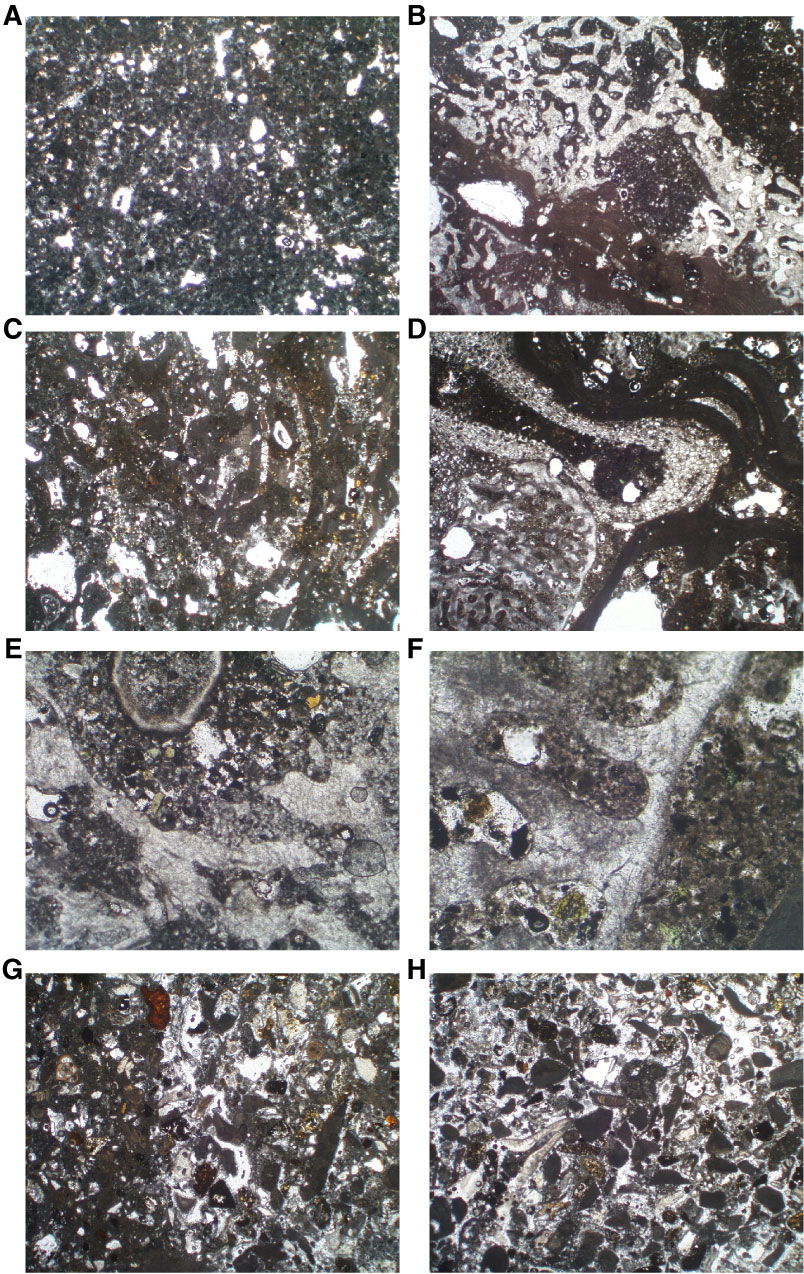
Figure F3. Photomicrographs of dominant sediment types. A, B. Lithologic Unit I Site Maraa “clean” samples showing peloidal microbialite fabric and coralgal framework with associated microbialite. A: ϕ = 0.19, VPwet = 4642 m/s, VSwet = 2480 m/s. B: ϕ = 0.26, VPwet = 4485 m/s, VSwet = 2392 m/s. C–F. Lithologic Unit I Site Tiarei samples showing volcaniclastic grains of olivine and pyroxene dispersed through microbialite matrix associated with coralgal framework. C: ϕ = 0.19, VPwet = 4554 m/s, VSwet = 2410 m/s. D, F: ϕ = 0.32, VPwet = 4065 m/s, VSwet = 2124m/s. E: ϕ = 0.21, VPwet = 4474 m/s, VSwet = 2364 m/s. G, H. Lithologic Unit II Site Maraa samples showing lithoclastic-skeletal grainstone. Skeletal grains include redalgal fragments, coral fragments, micritized grains, and undifferentiated skeletal debris. Volcaniclastic grains include olivine, pyroxene and plagioclase grains, and millimeter-sized subrounded basaltic lithoclasts. Note isopachous rims of marine cement lining the granular texture. G: ϕ = 0.14, VPwet = 4157 m/s, VSwet = 2237 m/s. H: ϕ = 0.16, VPwet = 4324 m/s, VSwet = 2242 m/s.

Previous | Close | Next | Top of page